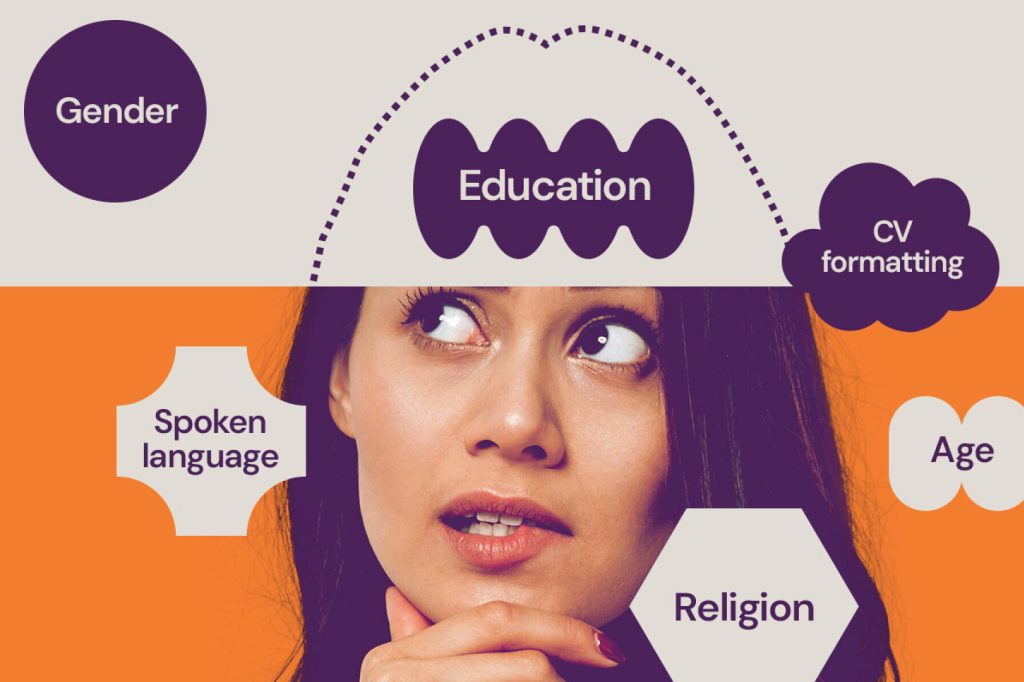
Whether it’s by accident or on purpose, it’s easy for people to let bias cloud their judgement when it comes to hiring decisions.
We all have biases and preconceived notions about the world. That doesn’t make you a terrible person, it’s just human nature. The problem is that we can’t always tell when those biases are quietly shaping our opinions. Or whether our biases are influencing the decisions we make, even when we’re trying to be truly objective.
Whether it’s conscious or unconscious bias, you and your business can’t afford it. You can’t afford to let bias influence your decisions especially when it comes to deciding who makes it to the next round of a recruitment process.
Avoid accusations of discrimination
Most importantly, you naturally don’t want to discriminate against people and deny them the opportunities afforded to others. You’re also leaving yourself open to accusations of discrimination and even potential lawsuits.
There’s a particular danger of bias influencing your decisions during the early stages of the hiring process. Especially when time poor and trying to decide who makes the initial cut, bias creeps in. People often start with a pile of CVs. They typically only spend around six seconds skimming through each one and glancing at the applicant’s claimed skills.
At the same time, you also don’t want to do your business a disservice. You don’t want to inadvertently overlook the best candidates for the job. Just as you can’t judge a book by its cover, you can’t judge a person by glancing at their CV or Cover Letter.
These days, you can have even less faith in Cover Letters and CVs, as candidates turn to artificial intelligence to write them. ChatGPT combines vast amounts of online information with natural language processing to create human-like conversational dialogue to help fake CVs.
In other words, ChatGPT can answer complex questions in a natural way that allows it to pass itself off as human – even those answers can’t always be trusted.
Related article: https://blog.expr3ss.com/fake-cvs-chatgpt-ghostwrites-cvs/
Bias sneaks in
This is not a good recipe for hiring great people. Firstly, part of the problem is that 78 per cent of jobseekers lie on their CV, according to a 2020 survey by reference-check firm Checkster. The most common lie is claiming proficiency in in-demand career skills which they don’t actually have.
Secondly, making split-second decisions based on an incomplete snapshot of a person offers the perfect opportunity for bias to sneak in without you even noticing. This can extend from major discrimination around age, gender, race and cultural background. Or to seemingly minor issues such as judging applicants according to the font and layout of their CV.
For example, we know from our research that if your name is Bharat Singh, then you’re much less likely to get called up for an interview than if your name is Bill Smith.
Failing to see past someone’s name, the biases and assumptions which can accompany this, means that businesses lose out. The best applicants can be overlooked, wasting time and effort hiring people who are a poor fit for the job. This is a bad outcome for both employees and employers.
Poor initial screening means a successful applicant is actually a bad fit for the job. They stay in the role for at least 18 months – even if they’re unhappy – to avoid a blemish on their CV. Meanwhile, you never know about the one that got away simply because you dumped their CV in the no pile for all the wrong reasons.
Applicant efforts to avoid bias
Some non-Anglo people even change their names to something more Westernised in an attempt to avoid bias and discrimination. When they successfully apply for a job, they need to write their legal name on documentation. Sadly some employers will baulk at this point even though they had already decided they were the best person for the job.
Similarly, many jobseekers experience discrimination because of their age, especially when they’re being interviewed by a 20-something recruiter. Often they cut back their CV experiences so as not to reveal their age to get to first interview. They miss out on job after job to younger people who are less qualified, simply because the recruiter fails to realise that a few wrinkles can be the hallmark of a wealth of real-workplace experience.
Technology aids recruiters to counter bias
So what is the answer to completely stamping out conscious and unconscious bias? It is not to hand over the hiring process to algorithms and completely remove people from the equation. Instead, the answer is to take advantage of technology. Use technology in order to be more objective when determining which applicants should make it through to the interview stage.
Using short surveys instead of relying on CVs, Expr3ss! quickly and cost-effectively pinpoints job applicants with the right skills, attitudes, temperament and cultural fit. Employers tailor the questions to ensure that they unambiguously address the requirements of the role. Plus these questions assess the attitudes and temperament of each applicant, while filtering out their own biases.
The surveys typically take around six minutes, while ensuring that the best applicants make it through to the interview stage. Surveys can also include “deal-breaker” questions. These deal-breaker questions ensure applicants have all the necessary qualifications and certifications before they are progress to interview.
The idea isn’t to remove people from the hiring process. Instead, the idea is to ensure that recruiters leave their biases at the door when deciding who is really the best person for the job.
